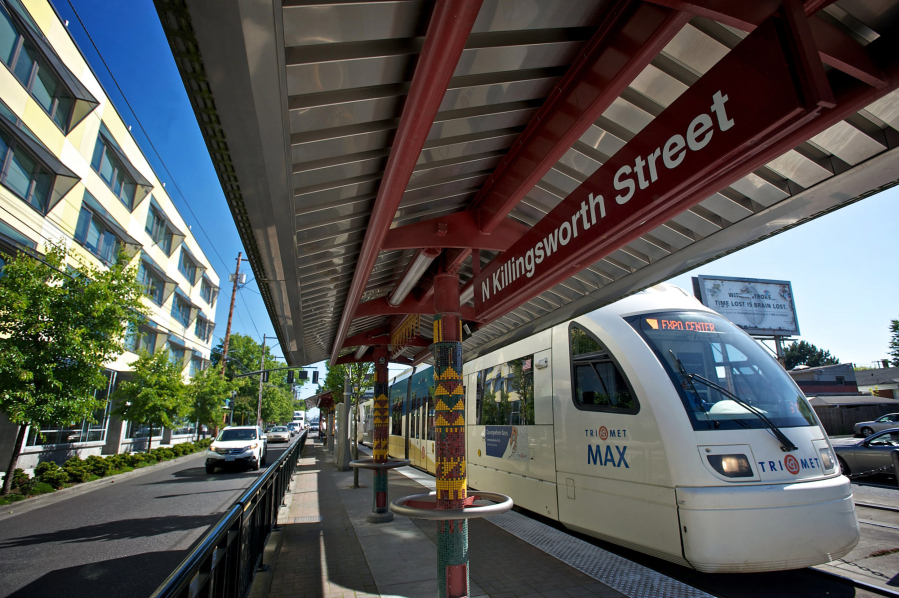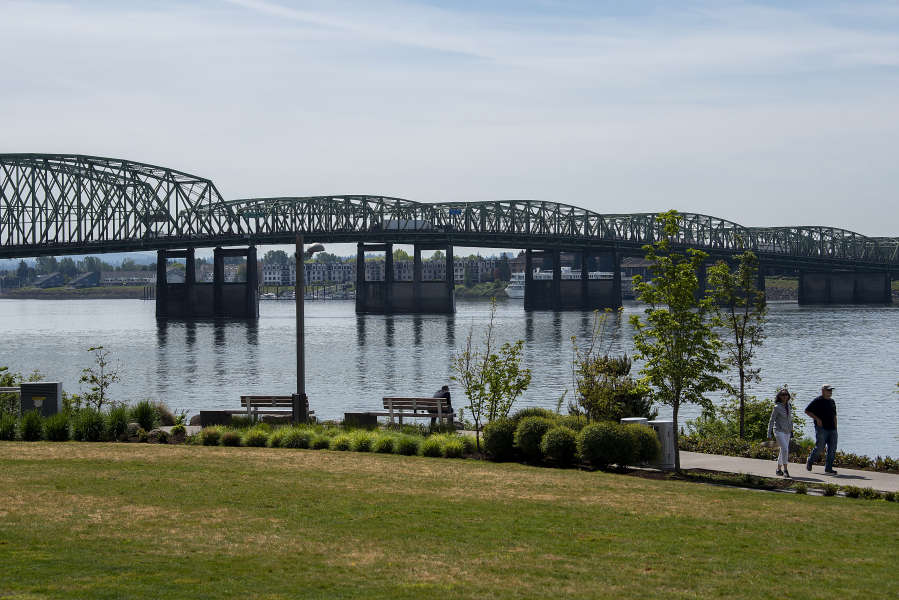Recent headlines about the Interstate 5 Bridge replacement effort have chronicled the reemergence of one of the biggest sticking points from Columbia River Crossing era: light rail.
The CRC design option chosen in 2011 featured an extension of Portland’s MAX Yellow Line through downtown Vancouver, drawing the ire of light rail opponents on the north side of the river. Its inclusion is often cited as one of the factors that ultimately led to the Washington Senate voting to withhold the state’s portion of the funding, scuttling the project in 2013.
The present-day Interstate 5 Bridge Replacement Program has done its best to keep the issue simmering on the back burner. Discussions among the project’s bistate legislative committee have stressed broad agreement on the inclusion of high-capacity service such as rail service or bus rapid transit without committing to any specific option.
“One of those principles (that we laid out at the start) was that high-capacity transit would be a part of this project, and we all embraced that, we all agreed to that,” said Sen. Annette Cleveland, D-Vancouver. “From there, however, we felt strongly that it’s not our role as elected officials to design a bridge. It’s for those with the expertise to do so with the help of our communities.”
But the issue appeared to abruptly boil over last month when U.S. Rep. Earl Blumenauer, D-Ore., voiced strong support for light rail in an April 9 interview with Willamette Week, even suggesting that federal funding for the project could be dependent on light rail’s inclusion.
In a Facebook post, U.S. Rep. Jamie Herrera Beutler, R-Battle Ground, denounced Blumenauer’s comments as the “same stubborn, top-down attitude that effectively killed” the CRC, and called for “agreement on both sides of the river” about the new project’s design.
She later told The Columbian that concerns about the technical feasibility of light rail in the CRC’s design and historic opposition among Clark County voters made the idea a virtual nonstarter. The project needs a mass transit component, she said, but other options, like bus rapid transit, could better fulfill that mandate.
“On the political side of it, not necessarily the engineering side, if Clark County has a major change of heart on light rail, I’m open to the idea,” she said. “But that’s not what they’re telling me. That’s not what I’m hearing.”
Project officials and members of the replacement project’s bistate legislative committee appear eager to turn down the heat.
“Nobody has said that (light rail is a must) in this group, to this point,” said Sen. Lynda Wilson, R-Vancouver. “We’ve never said that, not Oregon or Washington.”
Rep. Sharon Wylie, D-Vancouver, described Blumenauer’s comments as an expression of his own preferences. She characterized herself as receptive to the idea of light rail but noted that bus rapid transit development in Vancouver over the past decade makes the decision more complicated this time around.
Light rail and bus rapid transit were the only two high-capacity transit options that “passed muster” during the CRC study, according to Interstate Bridge Replacement Program administrator Greg Johnson, so the IBR office is only studying those two options — but it hasn’t made any decision or recommendation.
The choice between the two modes will be based on data from transit models, population trends and other studies that will be conducted over the next two years, he said, rather than political support for one mode or the other.
Light rail was chosen as the preferred mode last time, he said, but the situation has changed. A bus rapid transit line in 2011 would have been the first of its kind in the region, but C-Tran now has one active bus rapid transit line in Vancouver and a second on the way, and TriMet is developing its first bus rapid transit line in Portland.
“People have made and lost fortunes trying to bet on what’s going to happen politically,” he said. “But our program, we cannot go down those paths. We have to follow technical procedures that are set up for us. We have to follow a process to get to our answers.”
The deadline for those answers is late 2023 or early 2024. That’s when the project timeline calls for the office to submit a final recommended version of the new bridge for federal evaluation, he said, and at that point the program staff will need to use the data to make the case for one mode or the other as the best fit for the region’s future mass transit needs.





